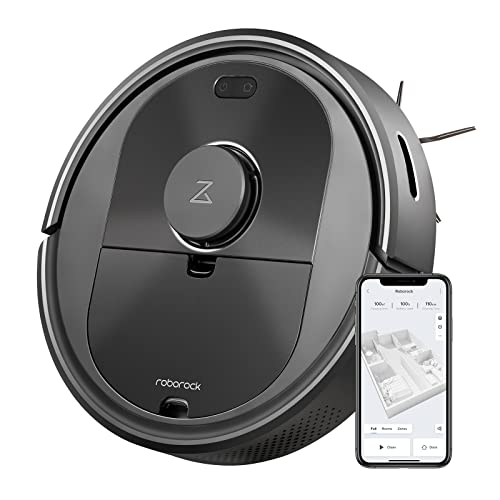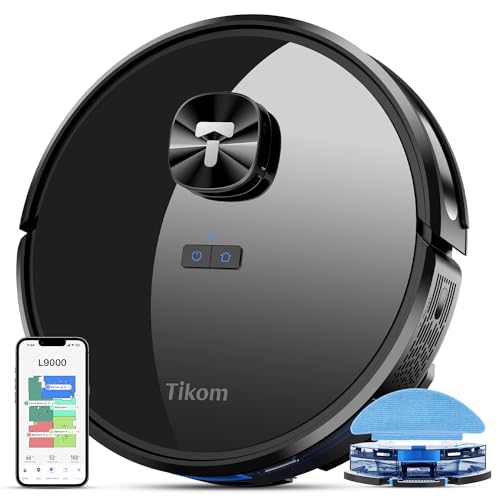What Is Vacuum Lidar And Why Is Everyone Speakin' About It?
페이지 정보

본문
 What is Vacuum Lidar?
What is Vacuum Lidar?Vacuum lidar is a sensor that emits laser beams which detect objects in the room and determine their distance from the robot vacuums with lidar, giving it accurate mapping and navigation. It helps the robot to navigate through obstacles.
 Without SLAM vacuums are prone to random patterns and have a difficult time working around furniture. With SLAM, they can, however, move in straight lines and adhere to corners effortlessly.
Without SLAM vacuums are prone to random patterns and have a difficult time working around furniture. With SLAM, they can, however, move in straight lines and adhere to corners effortlessly.Accuracy and precision
A robot vacuum without lidar relies on only visual data to navigate. While this technology can provide an efficient cleaning experience, it's limited in its functionality and compatibility with smart home systems. Lidar offers a variety of features such as navigation and obstacle detection. Lidar navigation systems are more precise and precise than camera-based ones.
What is the function of this technology? It utilizes a laser to scan the room and measure distances. The device creates a digital map of the room by using an array of points that correspond to various objects and surfaces within the room. The sensor Vacuum Lidar tracks the time taken for each signal to be able to reach the object and bounce back, giving it an exact distance reading. LIDAR is also known as Light Detection And Rangeing, is the name given to this technology.
With this information, the robot vacuum then knows exactly where each object is located and can precisely plan a route through the space to avoid them. In the end, a robot with lidar can avoid obstacles such as chairs or sofas that hinder its path and complete the cleaning process faster than a machine without this technology.
This system is not only useful for preventing collisions but also for identifying specific areas that require cleaning. This is especially useful for homes with larger spaces or if you want the vac to pay particular attention to certain rooms, like the kitchen or living room. This can also save battery by avoiding unnecessary movement and making fewer trips to the charging station.
Certain robot vacuums come with additional features that can improve their performance, for instance, edge detection and the ability to recognize different types of floors. Edge detection is an essential feature, especially for robots used on stairs and ledges. It will prevent the machine from falling over and damaging furniture or the machine itself. Certain models also allow users to manually override the auto mode when it comes across an edge.
Other smart features that you might see in a robot equipped with lidar include the ability to define virtual boundaries and designate certain areas to be cleaned. You can utilize the ECOVACS HOME app to create an image of your house and then draw virtual lines around areas which you want the vacuum to clean. This can be helpful if you have expensive rugs or narrow spaces that are difficult for the robot to get into. The robot will follow the predetermined routes and only reach the areas that are necessary, saving you from the frustration of missing a area.
Real-time Mapping and Navigation
Lidar is able to map the environment in real-time, which is not the case with navigation systems that rely on cameras. This makes robot vacuums more efficient in their ability to navigate spaces and avoid obstacles, which in turn reduces the need for repeated cleaning and omissions while reducing the time needed to clean. Lidar-equipped vacuums also have better performance in areas that have floors that are different, since they can recognize the different patterns and textures of these floors. Unlike camera-based systems, lidar sensors aren't affected by changes in lighting conditions and can identify objects on flat surfaces or even behind glass.
Vacuum lidar is able to map its environment and determine its location within the space. It can then plan its route in real-time. This enables it to move through the room in a systematic manner, covering every corner and edge with ease. It also can detect the presence of multiple items and determine their height and distance from the robot.
The lidar technology is still somewhat limited in regards to its accessibility. The cost of Lidar sensors has been a challenge, although constant improvements could make the technology more affordable in future.
The most effective DEEBOT with mapping technology comes with a range of features to ensure that your home is kept clean and efficiently. The Dreame F9, for example is equipped with 14 infrared sensors to identify obstacles and obstructions. It also adjusts its route if it encounters an object on the stairs or is approaching an entrance. It will also activate the cliff sensor to prevent it from falling off staircases.
Other technologies, like cameras or gyroscopes, can perform similar functions on the vacuum cleaner. Gyroscopes are a great way to prevent the robot from bumping into objects, and they could also help it form an initial map of the surrounding. They're not as precise as systems utilizing lasers like SLAM or Lidar. They can still provide an excellent level of navigation for cheaper than other options. Cameras can also be an alternative to laser systems for navigation and mapping as they require less maintenance.
Obstacle Detection
Lidar-equipped vacuum robots can detect obstacles, allowing them to navigate around them. The sensors scan and map the room by using laser beams and measuring the time taken for the light to bounce off the objects and return to sensor. The sensors then create a 3-D map of the space, providing real-time distance measurements and eliminating the need for cameras.
Lidar sensors are extremely accurate however, they have a few limitations. These include a tendency to mistake clear or reflective surfaces as obstacles and a failure to detect small objects and difficulties working in rooms with complicated layouts. These limitations can impact the ability of the vacuum cleaner. It might be unable to navigate certain areas of the floor, Vacuum Lidar or not be able to identify an object that is in its route.
Manufacturers may combine several mapping technologies to provide the best possible navigation experience. For instance, certain models feature both Lidar and SLAM (Simultaneous Localization and Mapping). This is a significant expense, but it also provides the most accurate navigation. It allows the robot to start by constructing a map of your home, and ensures that it cleans in a systematic manner instead of randomly.
Other mapping technologies include cameras and gyroscopes. While these systems can keep the robot from hitting things and may aid in creating a basic map of your home, they cannot perform as well as systems that utilize lasers, such as Lidar and SLAM.
The type of mapping system you choose to use will ultimately be based on your personal preferences and budget. Some people prefer a robot that has gyroscopes while others prefer a navigation system with more advanced features. Try out various vacuum robots to see which one is best for you. Also, think about the features you value most.
Easy Maintenance
With the companion app, you can create virtual boundaries to keep it out of specific areas or to set room-specific cleaning schedules. You can also track its progress, change its power settings, and check the status of its HEPA filter, brushroll and side brushes. Its dirt compartment is easily accessible through a black glossy cover on top and should be emptied into a garbage bin as it fills. It's also simple to stop and restart cleaning sessions, and share the vacuum with other household members.
- 이전글Where Will Vauxhall Corsa Key Fob Replacement 1 Year From What Is Happening Now? 24.03.15
- 다음글xX7aR1pK3 24.03.15
댓글목록
등록된 댓글이 없습니다.
